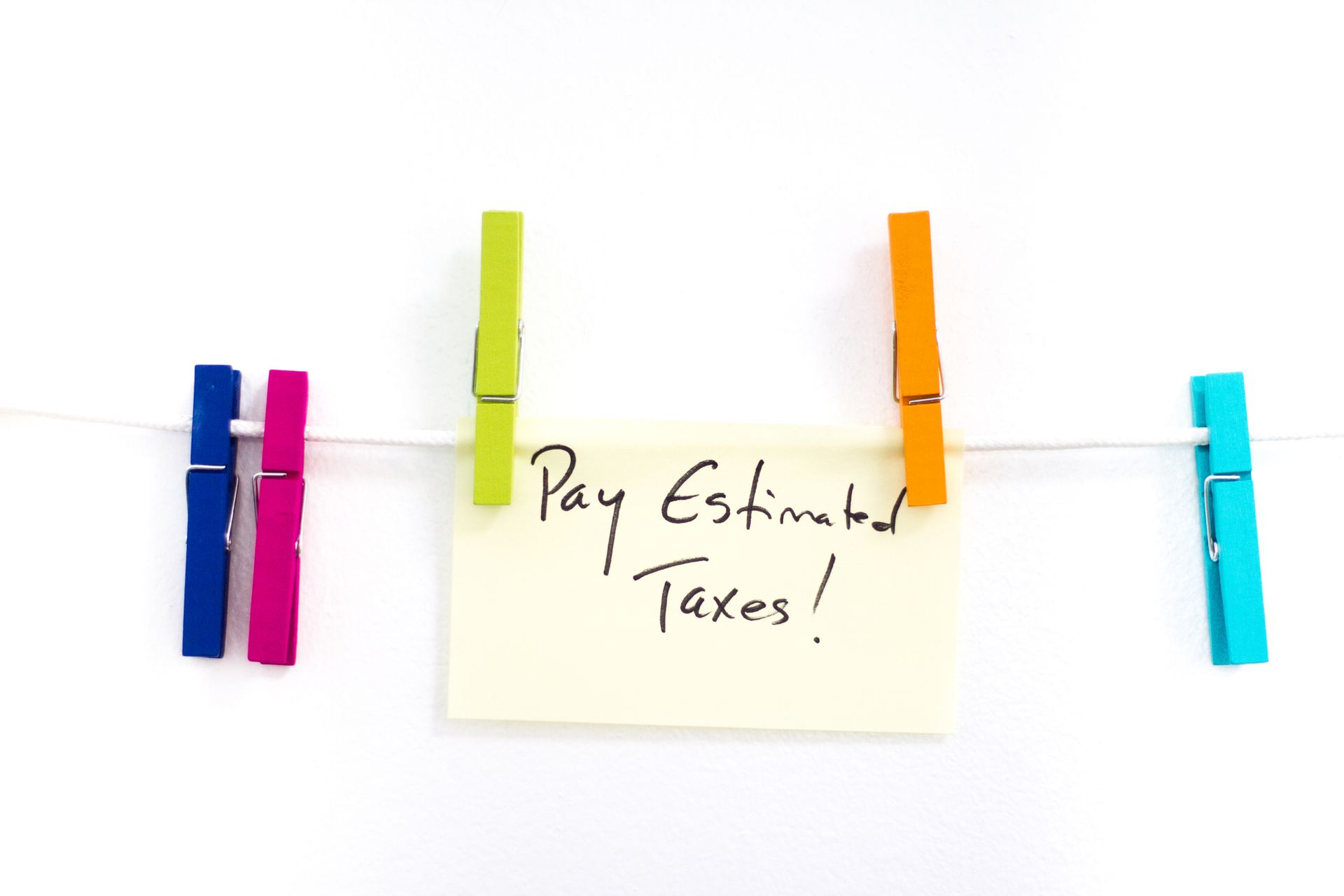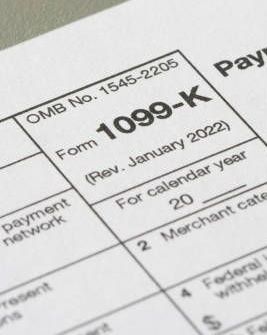News
Newsletters

July 22, 2024
In New Jersey, as in many other states, there are requirements to make estimated tax payments if you expect to owe a certain amount of tax when you file your return. Here's a breakdown of the general rules: Federal Requirements (which often align with state requirements): For the federal government, to avoid penalties, you generally need to pay at least the lesser of: 90% of the tax you will owe for the current year, or 100% of the tax shown on your prior year's tax return (110% if your adjusted gross income was more than $150,000). New Jersey Estimated Tax Requirements: New Jersey follows similar rules to the federal guidelines with some specifics: If you expect to owe $400 or more in New Jersey Income Tax (after subtracting withholdings and other credits), you should make estimated payments. To avoid penalties, you should pay either: 80% of the tax liability for the current year, or 100% of the tax liability from the prior year (110% if your prior year's adjusted gross income was over $150,000). How to Make Estimated Payments in New Jersey: Quarterly Payments: Estimated tax payments are due four times a year, typically on: April 15 June 15 September 15 January 15 of the following year 2. Payment Methods: You can make payments online through the New Jersey Division of Taxation website, by mail, or via electronic funds transfer. Penalties for Underpayment: If you don't pay enough tax through withholding or estimated payments, you might have to pay a penalty. This is calculated based on the amount of the underpayment and the period it was underpaid. To ensure you meet these requirements: Calculate your estimated tax liability accurately. Make timely estimated payments. Adjust your withholdings if needed to cover your tax liability.

December 15, 2023
IRS reminds taxpayers, Jan. 16 due date for final 2023 quarterly estimated tax payments WASHINGTON –The Internal Revenue Service today reminded taxpayers who didn’t pay enough tax in 2023 to make a fourth quarter tax payment on or before Jan. 16 to avoid a possible penalty or tax bill when filing in 2024. Taxes are normally paid throughout the year by withholding tax from paychecks, by making quarterly estimated tax payments to the IRS or by a combination of both. This is done because taxpayers need to pay most of their tax during the year as income is earned or received. Who needs to make a payment? Taxpayers who earn income not subject to tax withholding such as self-employed people or independent contractors should pay their taxes quarterly to the IRS. In addition, people who owed tax when they filed their current year tax return often find themselves in the same situation again when they file the next year. Taxpayers in this situation normally include: Those who itemized in the past but are now taking the standard deduction, Two wage-earner households, Employees with non-wage sources of income such as dividends, Those with complex tax situations and/or Those who failed to increase their tax withholding. What income is taxable? The IRS reminds taxpayers that most income is taxable, whether it’s unemployment income, refund interest or income from the gig economy and digital assets . When estimating quarterly tax payments, taxpayers should include all forms of earned income, including from part-time work, side jobs or the sale of goods. Also, various financial transactions, especially late in the year, can often have an unexpected tax impact. Examples include year-end and holiday bonuses, lottery winnings, stock dividends, capital gain distributions from mutual funds, stocks, bonds, virtual currency, real estate or other property sold at a profit. Delay in requirement for Forms 1099-K After feedback from taxpayers, tax professionals and payment processors the IRS announced that calendar year 2023 will be treated as another transition year for the reduced reporting threshold of $600. For calendar year 2023, third-party settlement organizations that issue Forms 1099-K are only required to report transactions where gross payments exceed $20,000 and there are more than 200 transactions. The IRS also issued a fact sheet to help people who may receive Forms 1099-K. How to make an estimated tax payment The fastest and easiest way to make an estimated tax payment is to do so electronically. Taxpayers have options when paying electronically from their bank account. Pay using IRS Direct Pay . This option allows taxpayers to schedule a payment in advance of the Jan. 16 deadline. Pay using IRS Online Account . This option allows taxpayers to view their payment history, pending or recent payments and other tax information. Pay using Electronic Filing Tax Payment System, or EFTPS . EFTPS is a free system which offers selections such as scheduling payments a year in advance, paying estimated tax payments and tracking and changing scheduled payments. Taxpayers also have the option to pay with their debit or credit card. The card processors, not the IRS, charge a fee for the service. Using these or other electronic payment options ensures that a payment gets credited promptly. More information on other payment options is available at IRS.gov/payments . Use the Tax Withholding Estimator to keep track The Tax Withholding Estimator , available on IRS.gov, can often help taxpayers determine if they need to make an estimated tax payment. It also helps them calculate the correct amount of tax to withhold throughout the year based on their complete set of tax facts and circumstances. Alternatively, taxpayers can use the worksheet included with Form 1040-ES, Estimated Tax for Individuals , or read through Publication 505, Tax Withholding and Estimated Tax , available on IRS.gov. Plan ahead It’s never too early to get ready for the tax-filing season. For more tips and resources, check out the Get Ready and Estimated Tax pages on IRS.gov.

July 31, 2023
When couples separate or divorce, the change in their relationship status affects their tax situation. The IRS considers a couple married for tax filing purposes until they get a final decree of divorce or separate maintenance. Update tax withholding When a taxpayer divorces or separates, they usually need to update their proper tax withholding by filing with their employer a new Form W-4, Employee's Withholding Certificate . If they receive alimony, they may have to make estimated tax payments. Taxpayers can figure out if they’re withholding the correct amount with the Tax Withholding Estimator on IRS.gov. Tax treatment of alimony and separate maintenance Amounts paid to a spouse or a former spouse under a divorce decree, a separate maintenance decree or a written separation agreement may be alimony or separate maintenance for federal tax purposes. Certain alimony or separate maintenance payments are deductible by the payer spouse, and the recipient spouse must include it in income. Rules related to dependent children and support Generally, the parent with custody of a child can claim that child on their tax return. If parents split custody fifty-fifty and aren't filing a joint return, they'll have to decide which parent claims the child. If the parents can’t agree, taxpayers should refer to the tie-breaker rules in Publication 504, Divorced or Separated Individuals . Child support payments aren't deductible by the payer and aren't taxable to the payee. Not all payments under a divorce or separation instrument – including a divorce decree, a separate maintenance decree or a written separation agreement – are alimony or separate maintenance. Alimony and separate maintenance doesn’t include: Child support Noncash property settlements – whether in a lump-sum or installments Payments that are your spouse's part of community property income Payments to keep up the payer's property Use of the payer's property Voluntary payments Child support is never deductible and isn't considered income. Additionally, if a divorce or separation instrument provides for alimony and child support and the payer spouse pays less than the total required, the payments apply to child support first. Only the remaining amount is considered alimony. Report property transfers, if needed Usually, if a taxpayer transfers property to their spouse or former spouse because of a divorce, there’s no recognized gain or loss on the transfer. People may have to report the transaction on a gift tax return.

July 20, 2023
Many people requested an extension to file their tax return after the usual April deadline. These filers have until Oct. 16, 2023, to complete and file their tax return. The IRS suggests that those who already have the forms and information they need file now – there’s no advantage to waiting until the deadline and filing now saves the worry that they may miss the deadline. Please send us your tax documents as soon as possible so we can start working on them. There are a few things extension filers should know as they get ready to file. File by the deadline Extension filers should file and pay any balance due by Monday, Oct.16, 2023. Taxpayers get their refund faster by choosing direct deposit Anyone due a refund should request direct deposit to get their tax refund electronically deposited into their financial account. IRS offers payment options for taxpayers with a balance due Those who owe taxes and can't pay their balance in full should pay as much as they can to reduce interest and penalties for late payment. The IRS has options for people who can't pay their taxes , including applying for a payment plan on IRS.gov. Taxpayers can view payment options or check their account balance online. Extension filers should request missing or incorrect documents directly from employer or other payers If a taxpayer is waiting to file because they’re missing a form like a W-2 or 1099, they should contact their employer, payer or issuing agency and request a copy of the missing or corrected document. If they still can't get the forms, they may need to use Form 4852 as a substitute. Taxpayers who didn’t file in April and didn’t request an extension should still file as soon as possible Anyone who did not request an extension by this year's April 18 deadline should file and pay as soon as possible. This will stop additional interest and penalties from adding up. There is no penalty for filing a late return for people who are due a refund Some members of the military have different deadlines Special deadline exceptions may apply for certain military service members and eligible support personnel in combat zones . The Department of Defense’s MilTax online tax software is available to service members and their families, regardless of income. Taxpayers in disaster areas may have more time to file Taxpayers living in an area impacted by a recent natural disaster may have an automatic extension of time to make various tax payments. Visit Tax Relief in Disaster Situations on IRS.gov for more information.
Need more information? Call us on (732) 945-5995 to speak with one of our experts.
*We are committed to safeguarding your data with security and privacy you can trust. Our secure document upload portal is a safe way to share files with us.
Contact Details
Phone: (732) 945-5995
Fax: (732) 898-7447
Email: info@wmptaxgroup.com
3301 Route-66 Neptune, NJ 07753
Building A, 2nd Floor
Tax Season Hours
- Mon - Thu
- -
- Friday
- -
- Saturday
- -
- Sunday
- Closed
Business Hours
- Mon - Fri
- -
- Sat - Sun
- Closed
Content, including images, displayed on this website is protected by copyright laws. Downloading, republication, retransmission or reproduction of content on this website is strictly prohibited. Terms of Use
| Privacy Policy











